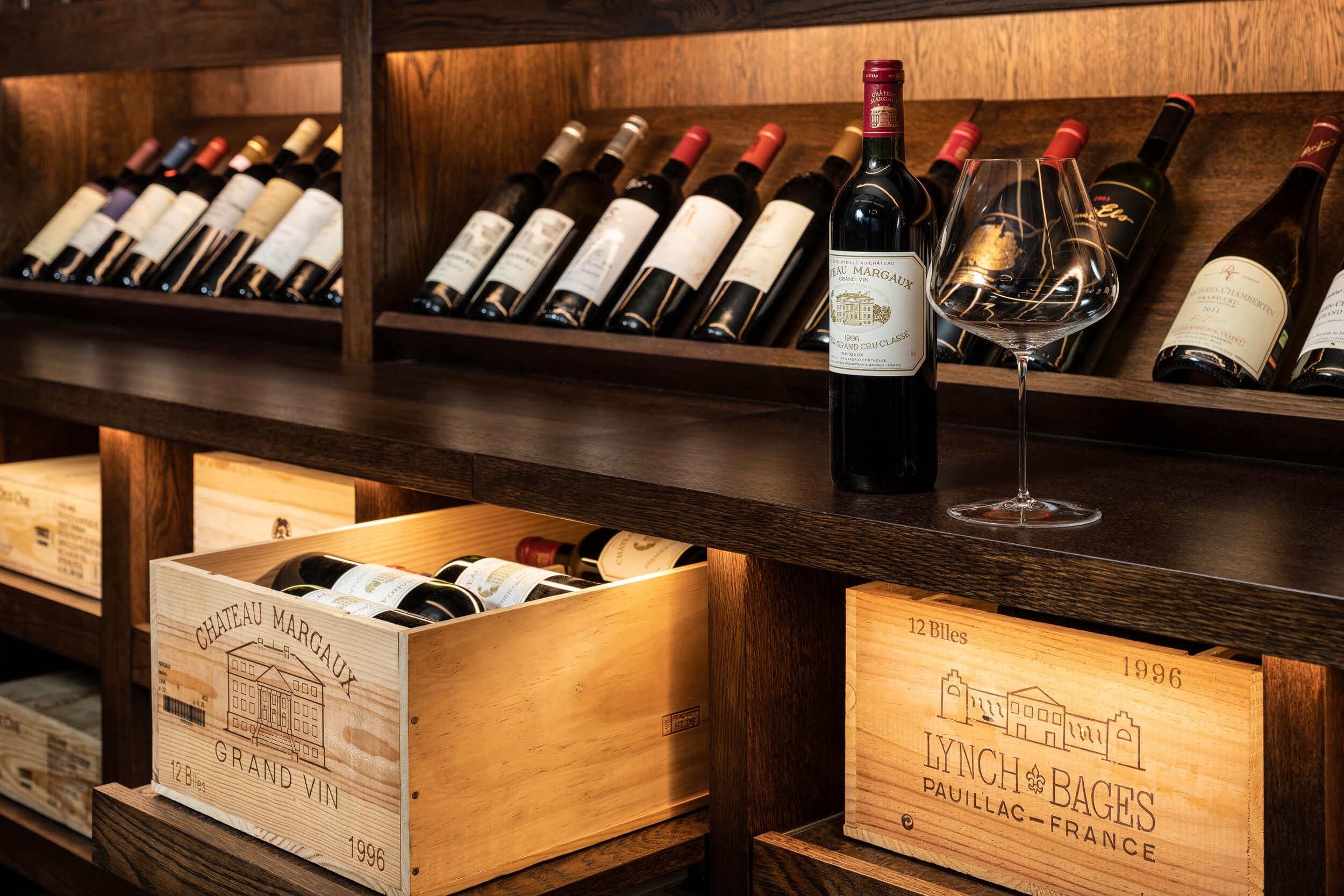Discover the Key Behind Wine Keeping; Let Us Open the World of Bottle Size. Those versed and those green to the trade are unsure of the common query. “How many bottles in a case of wine?” Essentially, the typical case count of wine will encompass 12 harmonious bottles filled with 750 ml of your desired varietal. This concoction mathematically takes you to nine liters, the quintessential dozen often represents the best of the wine industry’s collective travels through time made for the optimal convenience for transport and keeping.
Building Your Collection
To build your collection, impress a connoisseur, or host a gathering — at their core, the bottles within a case supply the building blocks for your wine adventure. An industry standard 12-bottle case may be the norm, but within viticulture, there exists a vivid array of case sizes catering to diverse tastes and preferences. From quaint six-bottle caskets for highly-prized rarities to sturdy chests swaddling large-format magnums, the realm of wine embraces diversity in its shell.
Allow WiseOnWine.com to escort you through the harmonious ballet of bottles per case of wine, where convention intertwines with convenience, ensuring each taste is a sip and a tutorial in enological enlightenment. Discover vinous case history and lift your wine wanderlust to unparalleled pinnacles of excitement!
Key Lessons
Typical wine case dimensions hold twelve bottles, equivalent to about nine liters.
The standard case includes 12 bottles to balance, manageable and efficient.
Cases of wine come in different numbers, with shared selections typically packaged in groups of six or fewer bottles.
Their grandeur frequently causes large format bottles, such as magnums, to be housed in six-bottle cases.
Knowledge about the different bottles per case of wine can augment purchase and collection occasions.
Investigating the Dimensional Characteristics of a Standard Wine Case
Knowing the standard metrics of a case of wine is crucial for wine drinkers and winemakers who want to match their cases with their wine storage capacity and wine-drinking plans. Concentrating on the size, number of bottles, volume, and dimensions of the case of wine helps us understand why these measures matter for wine handling and transportation.
750ml bottles are widely considered the standard format for wine.
For years, the 750ml bottle has been what the wine industry is geared toward, meaning that the industry standards allowed for the traditional size case and capacity.
Cases designed for these bottles tend to hold 12 units exactly, aligning neatly with shipping practices and retail expectations. Each case houses around nine liters of wine, giving the consumer a handy, complete package.
Bigger is Better with Magnums and Above
Wine does not all come in the standard 750-milliliter format. For those special bottlings or certain vintners, wines are put up in one-and-one-half liter bottles, magnums, or even bigger sizes. These larger bottles make up the bottle count in a cellar, affect the dimensions of a case, and determine the overall volume, giving connoisseurs and collectors unique options.
Comprehension of the Composition of the 12-Bottle Case
Reflecting a happy medium between quantity and practicality, a 12-bottle case of wine is what many producers opt for. This size case works well for shipping, saves space, and is a favorite of collectors because it is the line between buying in bulk and being convenient to handle.
| Case Type | Number of Bottles | Volume (liters) | Common Dimensions (inches) |
|---|---|---|---|
| Standard Case | 12 | 9 | 13 x 10 x 7 |
| Magnum Case | 6 | 9 | 14 x 10 x 8 |
| Half-Case | 6 | 4.5 | 10 x 7 x 7 |
Whether you like a split case for tasting or a whole magnum case for lavish parties, knowing these dimensions will prepare you better for storing or moving them and make you more aware of the space efficiency and design inherent in different quantities of wine. The case of 12 bottles has etched itself onto the wine world as much by tradition as by its practical advantages for shipping and retail presentation.
How Wine Packaging and Case Sizes Have Changed Over Time
From vineyard to table, the odyssey of wine has been redesigned across the centuries. There have been major changes in wine case size, wine bottle history, and the overall evolution of wine bottles and their packaging. A major transitionary period was when glass bottles replaced clay and wood in the 17th century. Standardized bottle sizes and modern wine case dimensions were established from this change.
In the early days, most wine was kept in formless clay or sometimes wood barrels, vessels for storing liquids, making it very difficult to regulate the amount of wine being sold or transported. The glass bottle revolution, apart from preserving wine much better, allowed unprecedented uniformity of packaging for the first time in history.
Now we can turn our attention to the momentous changes in wine packaging over recent years. It was a time in which fat, bulky barrels were rectified with the craftsmanship of glass. Standardizing bottle sizes to make transporting and storing easier. Various shapes and designs of bottles demonstrate the existing brands and styles of wine. Wine crates were introduced, leading to modern cardboard cases. The 750ml bottle became a global standard and was economically packed in 12 12-bottle cases. Today’s advancements continue with a focus on sustainability and consumer choice:
- Glass bottles that are lighter in weight to reduce carbon footprint.
- The use of materials that have been recycled and packaging that can biodegrade.
- Corks are made from biomass and labels that are better for the environment.
This type of evolution provides an informative perspective on the pragmatic and artistic concerns that have influenced the wine world’s evolution.
Century | Material | Impact on Wine Packaging
Pre-17th Century | Clay & Wood | Non-uniform, variable quantities 17th Century Onwards | Glass | Standardization of quantities possible with identical bottle production Modern Day | Recycled & Bio-materials | Sustainability blends with consumer preference for an evolved wine experience.
As we raise our glasses to the past, taking a sip of the future, the ancient core of wine is somehow inscribed in the containers we select to bestow upon it.
Unraveling Varying Wine Bottle Sizes
Novice and experienced wine drinkers need to understand how many bottles are contained in a case of wine. Whether you are hosting a large event or enjoying a fresh glass at home, knowing the appropriate case size will greatly affect your wine experience.
Choosing the Correct Case Size for Your Requirements
Determining the ideal case size is a matter of individual needs and tastes. Find a middle ground with a half-case if you enjoy a daily glass of wine or have multiple bottles of different wines open daily, for serious collectors with space to age bottles of wines for some time or those who (…) want to share wine at parties and gatherings besides (…).
Differentiating Between Half and Full Cases
A half-case typically contains six bottles, which makes it an exceptional way to get variety without ordering a large amount. Conversely, ordering a full wine case usually consists of twelve bottles, which is advantageous for the economics of bulk purchasing and making sure that your favorite wines are always there.
How Does Bottle Shape Affect the Number of Bottles in a Case?
When selecting a case, it’s important to acknowledge wine bottle shapes and cases. Although many standard cases are meant to gather traditional Bordeaux-style bottles, some may only carry unique bottle shapes like Burgundy or Champagne, which are wider and can affect case capacity.
| Case Type | Number of Bottles | Typical Use | Bottle Shape Consideration |
|---|---|---|---|
| Half-Case | 6 | Personal use, sampling | Standard to wide |
| Full Case | 12 | Bulk purchase, collections | Primarily standard |
| Custom Case | Varies | Special editions, gift sets | Specialty shapes |
Ultimately, whether a consumer chooses a half-case or full-case, depending on the variety of shapes and types of wine bottles and their cases, will reveal whether they are simply trying to explore or planning to develop a lifestyle collection. Making consumers aware of the difference empowers them to utilize that information to make choices that last throughout their wine experiences.
An In-Depth Examination of the Quantity of Bottles Within a Case of Wine
When exploring wines, an inquiry frequently comes to mind is how many bottles are in a case. The answer adheres to an industry-wide standard—a regular wine case size encompasses 12 bottles. With this uniformity, wine cases are easily manageable and cost-effective for producers and consumers, making them an internationally prevalent practice.
Nonetheless, it is fundamental to recognize variables that may influence wine case bottle counts. The wine case can tell the winemaker’s story, such as a futuristic design on the front label or as a testament to a local winemaking practice, for those who may covet such culturally rich displays. Additionally, wine cases of varying sizes provide opportunities for exclusivity and customization and are greatly enjoyed by the wine enthusiast community.
Premium and limited editions: producers may offer premium selections in cases of fewer than twelve bottles. Limited-release bottles can feature distinct bottle numbers for festive or landmark occasions. Regional Variations: Case dimensions can manifest from peerless methods observing local ways. The essential knowledge, to be sure, counting the translation of bottle to the case is also a reverence for the cultural story every case tells, appreciation for the logistical genius woven throughout winemaking’s heritage. Collector or casual consumer, wine case size is a conversation point brimming with history and diversity, one bottle at a time.
In Summary: How Many Bottles in a Case of Wine
Venturing into finding quality wines in a box is like stepping into an exclusive club for connoisseurs. Each wine filled box opens to an aromatic blend of its contents and gives you a sip of vineyards worldwide and vintage tales, the price tag is pocket-friendly and a well-rounded set of flavors is offered for exciting wine value. In this article, we hop across all the measurement standards, uncover the history unraveled, and decipher the numbers that sum it up, thus beefing up our wine box knowledge.
Getting the Most Value and Variety When Purchasing a Case of Wine
If people want to broaden their taste buds, picking up a case of wine introduces them to a spectrum of grape varieties and regional character. A custom-curated set is a personalized journey in taste; an expertly chosen assortment explores set themes. A well-chosen case can elevate a casual sipper’s experience or add treasured editions to a wine collection.
Why Wine Case Quantities Matter for Connoisseurs and Collectors
Collectors and lovers don’t see case quantities as just bulk. Knowing why the number of bottles in a case is set like it is helps manage a collection better. It maintains adherence to the traditional practices key to the wine experience’s heritage. The fabled case—12 bottles, of course—is more than just a box. As it was back in the day, it remains the standard for most wines today.
What Trends to Expect in Wine Packaging and Cases, but Also Sustainability Programs in the Future
Looking ahead, the industry’s gaze is locked on innovation and sustainability. The tide of sustainable wine packaging is not just an inclination but an alteration dictating the future of wine distribution. Earth-conscious materials and aesthetics are emerging, underscoring the industry’s dedication to eco-efficiency and resource-conscious care. As we phase through a landscape of viticulture and customer inclinations that align with rapid liveliness, the track ahead for forthcoming wine case trends is obvious: tradition and ecological sensibility must be negotiated nimbly.

